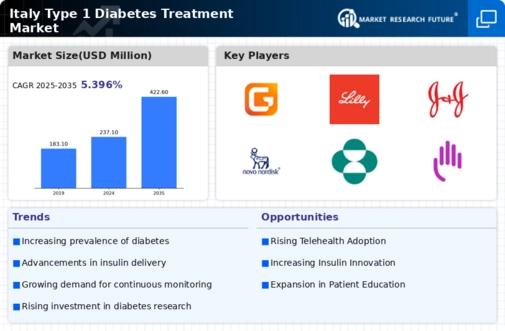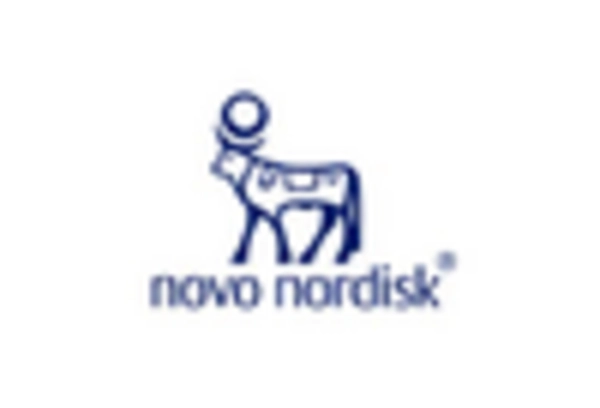Government Initiatives and Funding
Government initiatives aimed at improving diabetes care in Italy play a crucial role in driving the type 1-diabetes-treatment market. The Italian Ministry of Health has implemented various programs to enhance diabetes management, including funding for research and development of new treatments. These initiatives are designed to improve patient outcomes and reduce healthcare costs associated with diabetes complications. Furthermore, the government has increased funding for diabetes education programs, which aim to empower patients and caregivers. This financial support is expected to bolster the type 1-diabetes-treatment market, as it encourages innovation and the introduction of new therapies, potentially leading to a market growth rate of 5% annually.
Rising Incidence of Type 1 Diabetes
The increasing prevalence of type 1 diabetes in Italy is a primary driver for the type 1-diabetes-treatment market. Recent statistics indicate that approximately 1 in 400 children are diagnosed with this condition, leading to a growing demand for effective treatment options. This rise in incidence necessitates advancements in medical therapies and devices, thereby stimulating market growth. The Italian healthcare system is adapting to this trend by allocating more resources towards diabetes management, which includes insulin therapies and continuous glucose monitoring systems. As the population of individuals living with type 1 diabetes expands, the type 1-diabetes-treatment market is likely to experience significant growth, with an expected increase in market value projected to reach €1 billion by 2027.
Advancements in Insulin Delivery Systems
Innovations in insulin delivery systems are significantly impacting the type 1-diabetes-treatment market in Italy. The introduction of smart insulin pens and insulin pumps has revolutionized diabetes management, allowing for more precise dosing and improved patient adherence. These advanced devices are equipped with features such as Bluetooth connectivity, enabling real-time data sharing with healthcare providers. As patients increasingly seek more effective and user-friendly treatment options, the demand for these technologies is expected to rise. Market analysts suggest that the segment for advanced insulin delivery systems could account for over 30% of the total type 1-diabetes-treatment market by 2026, reflecting a shift towards more personalized diabetes care.
Growing Awareness of Diabetes Management
The rising awareness of diabetes management among the Italian population is a significant driver for the type 1-diabetes-treatment market. Educational campaigns and community outreach programs have been instrumental in informing patients about the importance of regular monitoring and effective treatment strategies. This heightened awareness is leading to increased consultations with healthcare professionals and a greater willingness to adopt new treatment modalities. As patients become more informed about their condition, they are more likely to invest in advanced treatment options, thereby propelling market growth. It is estimated that the market could see a growth of approximately 4% annually as awareness continues to expand.
Collaboration Between Healthcare Providers and Technology Firms
The collaboration between healthcare providers and technology firms is emerging as a vital driver for the type 1-diabetes-treatment market. Partnerships aimed at developing innovative solutions for diabetes management are becoming increasingly common in Italy. These collaborations facilitate the integration of cutting-edge technology into treatment protocols, enhancing patient care. For instance, the development of mobile applications that track blood glucose levels and provide personalized feedback is gaining traction. Such innovations not only improve patient engagement but also streamline communication between patients and healthcare providers. This synergy is likely to contribute to a robust growth trajectory for the type 1-diabetes-treatment market, with projections indicating a potential market expansion of 6% by 2028.

















Leave a Comment